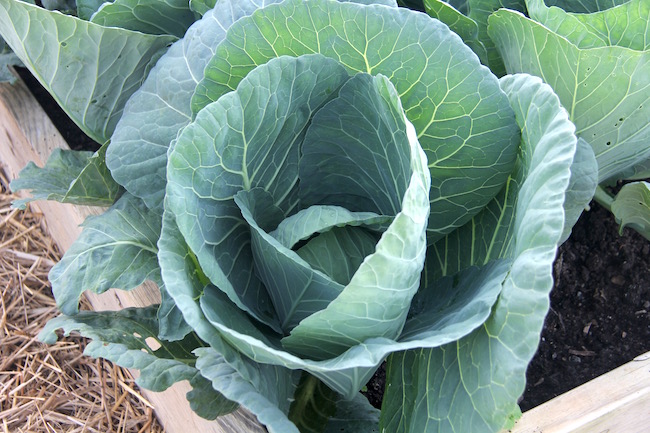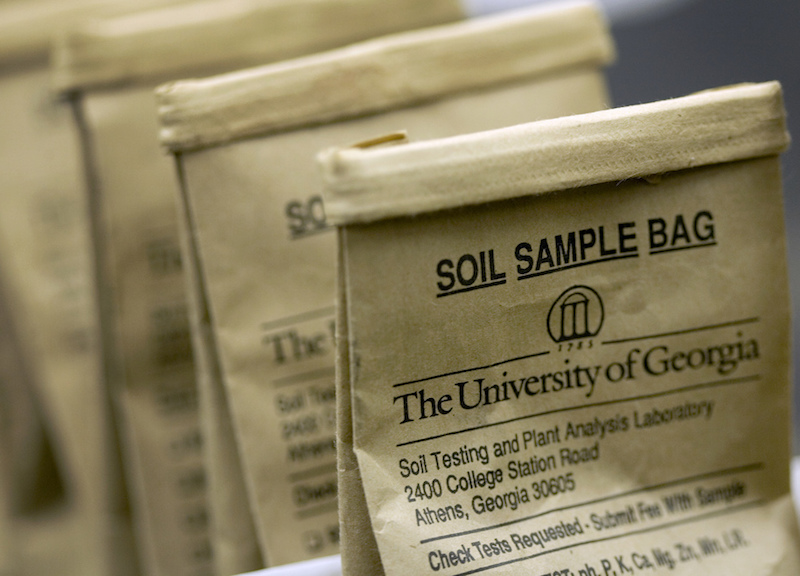
The end of summer into early fall tends to be the hottest time of the year in the state of Georgia. Many of us are about tired of laboring in our summer gardens, and the heat, humidity, and disease and insect pressure have certainly taken their toll on our summer crops. However, for those of us who still have the gardening itch, the last weeks of summer are the ideal time to prepare your garden for winter vegetables.
If you haven’t done so already, it’s a good idea to soil test to check out the nutrient levels of your garden plot. The pH of the soil is the most critical element to determine and should be adjusted to a range of 6.2 to 6.8. Spent summer vegetables should be removed and added to the compost pile, allowing room to till and plant new crops. The garden can now be tilled and smoothed to get ready for winter vegetables.
Winter crops — such as broccoli, cabbage, cauliflower and Brussels sprouts — are best planted as transplants. Leaf lettuce, Swiss chard and other fall and winter greens do well when directly seeded into the garden. Take care not to cover tiny seeds too deeply or they will have trouble germinating. University of Georgia Cooperative Extension offers a vegetable garden calendar to help guide your planting choices.
When it comes to growing winter vegetables, the biggest challenge sometimes comes from temperature extremes, which can swing from very warm to extremely cold virtually overnight. Warmer than normal days can cause lettuce to bolt and get bitter. Bolting occurs on leafy greens when they sense warm temperatures and try to put up seed heads. Insects invasions pose another problem for winter vegetables.
Controlling pests and diseases
Although many summer pests have begun to subside, there are still plenty of pest insects out there. White flies and aphids could still be present from the summer garden. Cabbage looper is another pesky insect that loves to tunnel through cabbage, broccoli and other greens. Snails and slugs can also manifest themselves on warmer evenings, creating holes in your plants. When it comes to control, early detection is key. Monitor plants regularly to spot the first signs of insect trouble. Organic insect control products, such as Bacillus thuringiensis (Bt) or DiPel, work very well on caterpillar-type insects such as loopers. Other insects can often be chased off or killed with pyrethrins — pesticides found naturally in some chrysanthemum flowers. Other options are Safer® brand insect-killing soap or mild insecticides. Quick control is essential to catch insects before they tunnel deep into the plants. Caterpillars deep inside a cabbage head will be heavily protected from all the leaves and may not be affected by insecticides. Information on home and garden insect control is available in the Georgia Pest Management Handbook: 2021 Home and Garden Edition.
Disease also can be an issue in the winter garden, but usually less so than in the summer months. Foliar diseases, root rots and potential viruses, while not overly common, can still affect the winter garden if not carefully monitored. Many are brought on by poor cultivation practices. Mulching around plants with pine straw, wheat straw or chips can protect weeds from being contaminated with disease-bearing soil. A few inches of mulch will also help cut down on winter weeds, as well as help moderate root temperatures. Watering practices can also influence the potential for disease.
When possible, use soaker hoses or drip irrigation to water all winter vegetables. Overhead water with a sprinkler wets the foliage and makes vegetables more susceptible to disease. Overhead irrigation also wets much of the non-target area and encourages excess weed growth while wasting water. Walk through your garden regularly and remove any leaves showing symptoms of disease. This helps keep disease at bay and most of the time the plant will recover. When it comes to watering, people often believe cooler temperatures mean plants no longer need supplemental irrigation, but this is not the case. Vegetables still need one to one-and-a-half inches of water per week to obtain optimum growth. Container grown or raised beds may need more frequent watering as they tend to lose water faster and dry out.
Enriching the soil

One of the final components for managing your winter garden is providing proper nutrition to plants. While the soil sample run through your county UGA Cooperative Extension office should give the proper recipe for fertilization success, many gardeners chose to wing it and fertilize without testing. If you choose this route, it is best to keep it simple. Leafy green vegetables will require more nitrogen than winter peas, carrots or even broccoli.
Without a soil sample, I would fertilize with a premium fertilizer that contains micronutrients as my initial feeding at planting. After the crop begins to form up a tiny vegetable, I would then fertilize with a product such as 12-4-8. Be careful not to feed you plants too much or you’ll push out excessive growth and fewer vegetables. Some vegetables, like greens and broccoli, can continue to be harvested even after the initial harvest. Additional fertilization every three to five weeks should help ensure a healthy harvest. A guide for fertilizing a variety of crops is available from UGA’s Agricultural and Environmental Services Laboratories.
For areas of the garden where you have chosen not to plant winter vegetables, consider a cover crop versus leaving the area barren. Cover crops are often called green manure and are essentially green plants that help hold the soil from erosion and provide nutrients when put into the soil. They also look much better than bare soil or dead plants. I prefer a winter crop mix of a cereal grain such as wheat, rye or oats mixed with a legume such as winter peas or clover. Avoid planting the ryegrass available in the big box stores as this plant is difficult to eradicate in the spring. Cover crops should be fertilized at planting time and perhaps once again during the season to give them a boost.
Although winter gardening has its challenges, it is also one of the most pleasant times of year to spend in the garden. While you certainly can purchase all of this produce at the grocery store, there is simply nothing like being able to harvest fresh vegetables from the garden and cooking them the same evening. The satisfaction and flavor are better than anything you can purchase from the store.
A wealth of home gardening and landscape advice is available at extension.uga.edu/publications.






